Linear Booths
Linear booths, also called “in-line” booths, have only one side exposed to an aisle and are arranged in a series along a straight line
Dimensions
For purposes of consistency, ease of layout and/or reconfiguration, floor plan design in increments of 10' (3.05m) has become the de facto standard in the United States. Therefore, Linear Booths are most commonly 10' (3.05m) wide and 10' (3.05m) deep, i.e., 10' x 10' (3.05m x 3.05m). A maximum back wall height limitation, including signs and graphics, of 8' (2.44m) is specified.
Use of Space
Regardless of the number of Linear Booths utilized, e.g. 10’ x 20’ (3.05m x 6.10m), 10’ x 30’ (3.05m x 9.14m), 10’ x 40’ (3.05m x12.19m), etc., display materials should be arranged in such a manner as to not obstruct sight lines of neighboring exhibitors. The maximum height of 8’ (2.44m) is allowed only the rear half of the booth space, with a 4’ (1.22m) height restriction imposed on all materials in the remaining space forward to the aisle.
Note: When the 10’ x 20’ is on a corner or three or more Linear Booths are used in combination as a single exhibit space, the 4' (1.22m) height limitation is applied only to that portion of exhibit space which is within 10' (3.05m) of an adjoining booth.
Hanging signs are not permitted in Linear Booths. Signs and graphics must be finished on both sides and cannot exceed 8’ (2.44m).
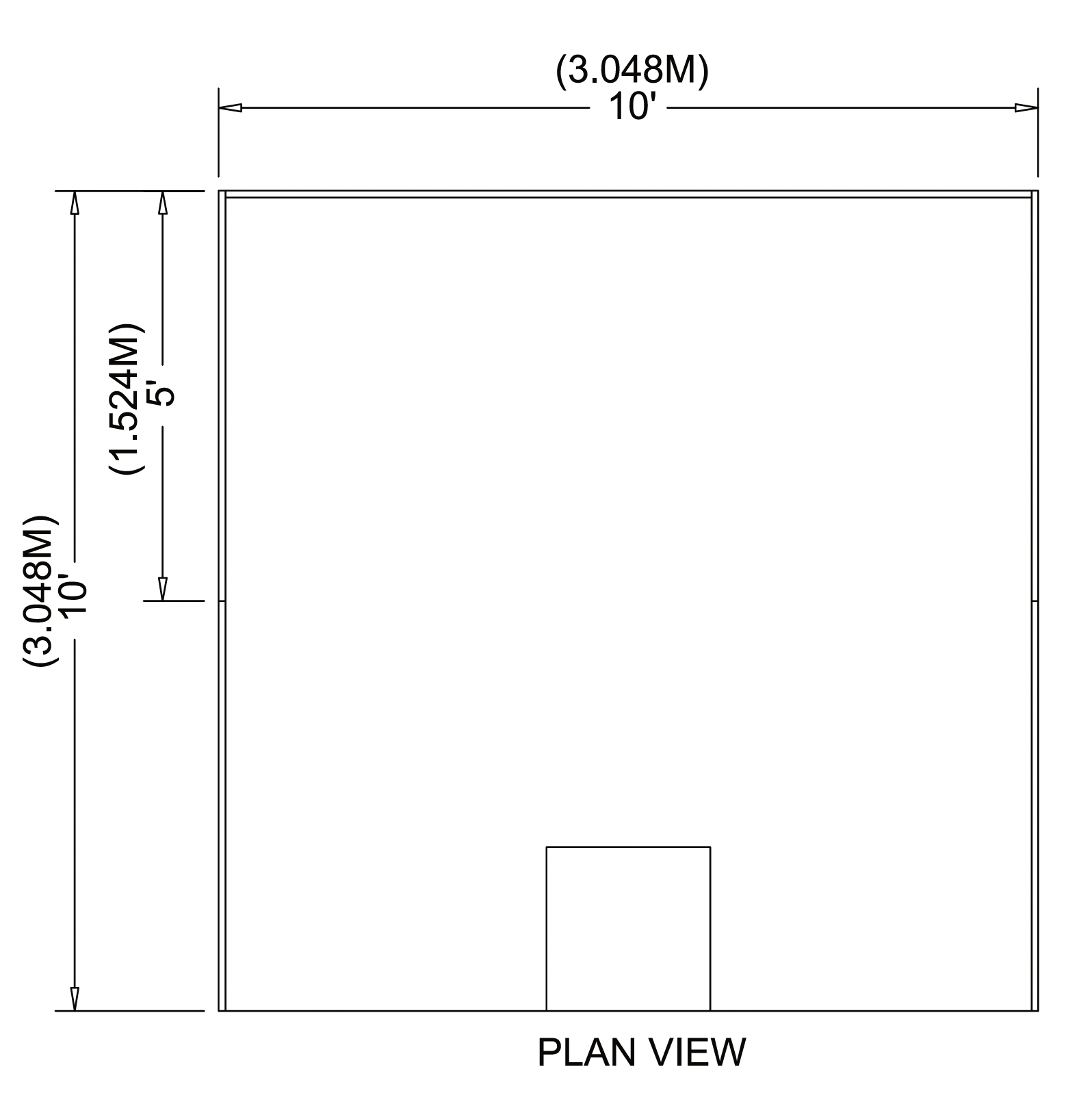
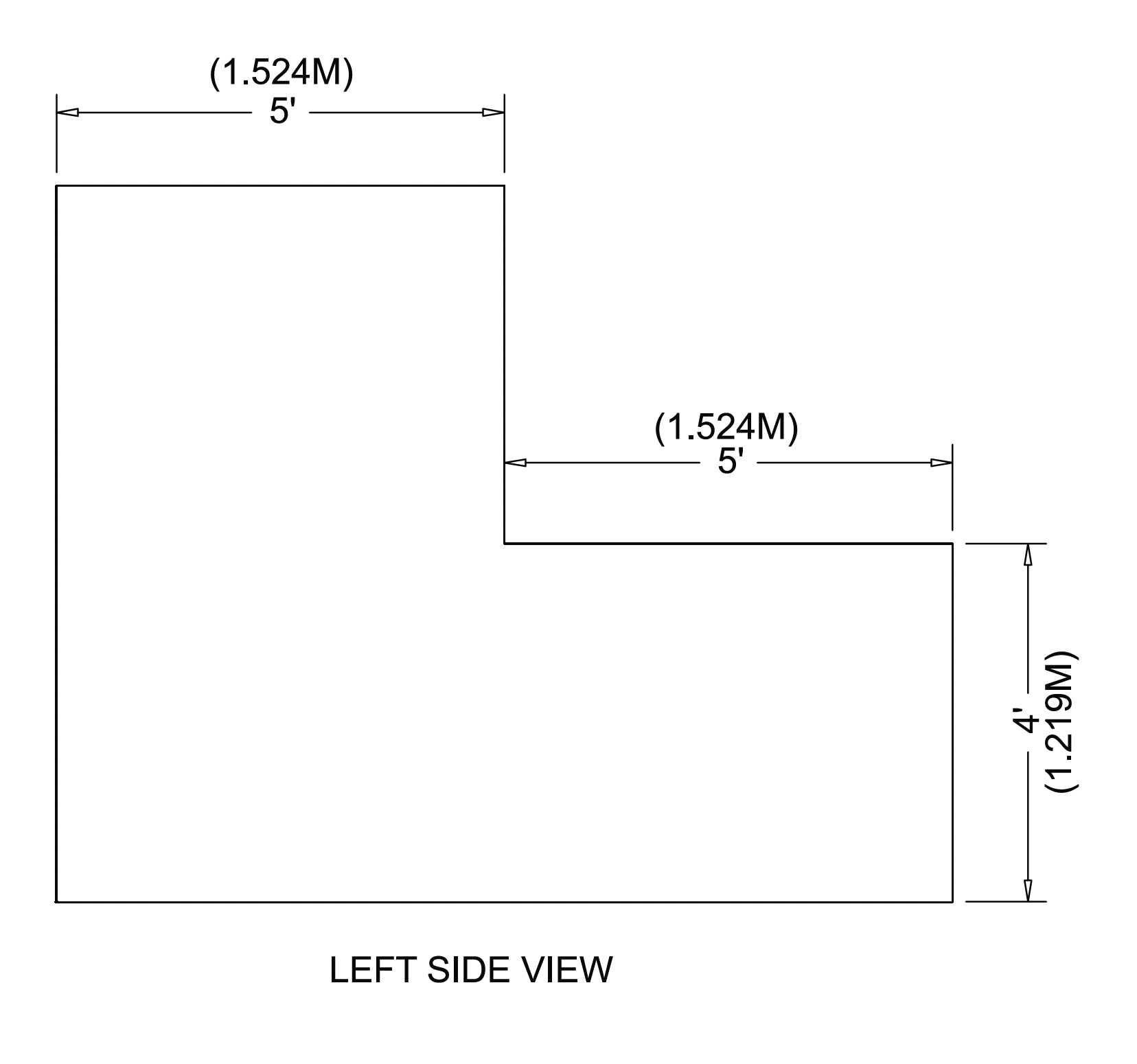
Corner Booths
A corner booth is a linear booth exposed to aisles on two sides. The corner booth minimum requirement is 10' x 20' (3.05m x 6.10m).
Use of Space
The 4' (1.22m) height limitation is applied only to that portion of the exhibit space which is within 10' (3.05m) of an adjoining booth.
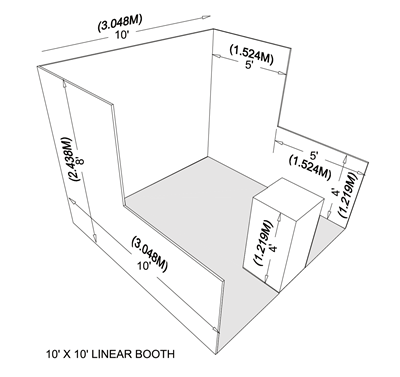
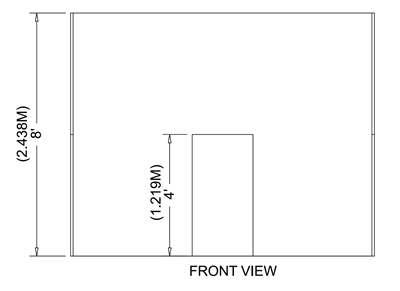

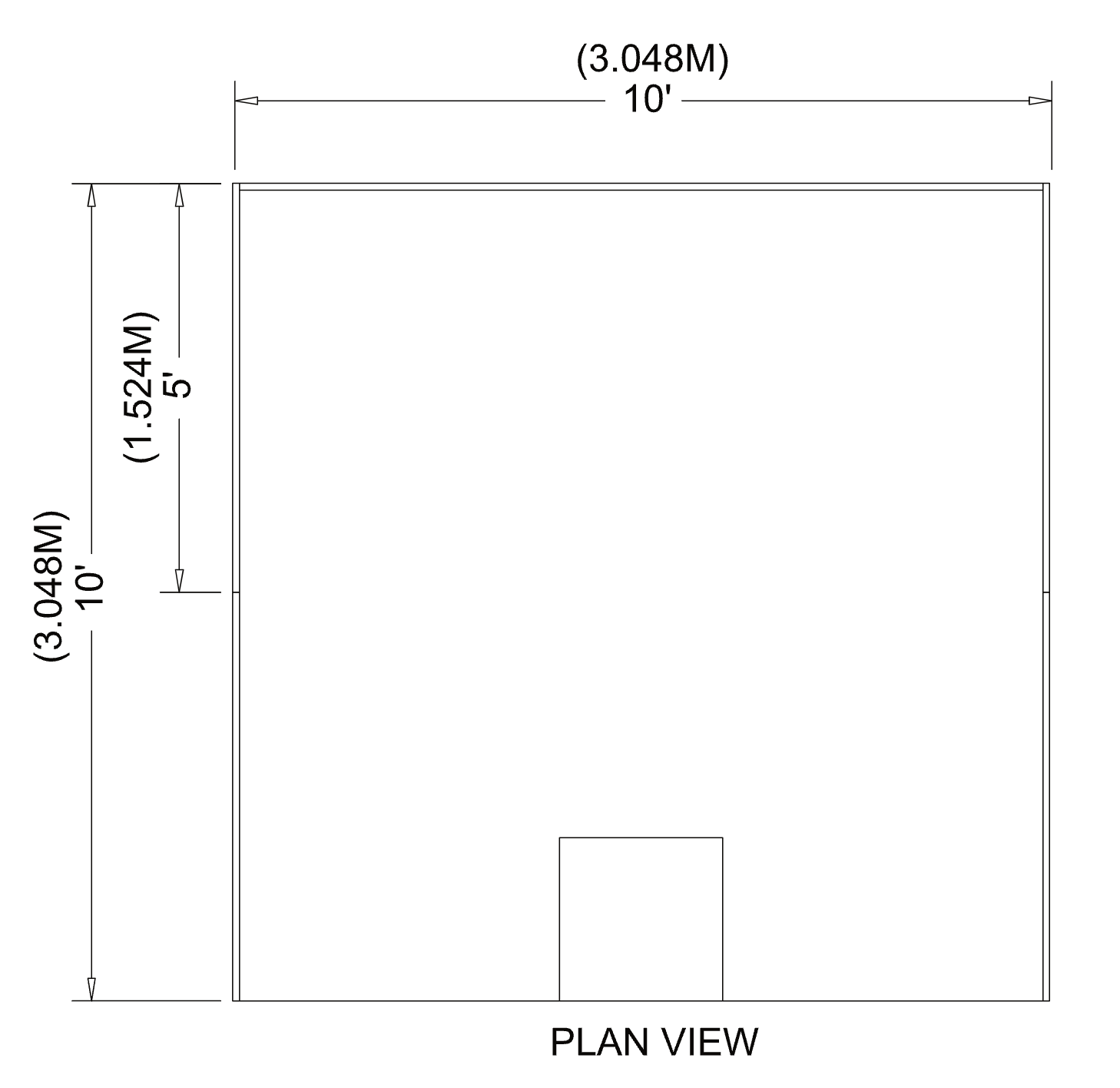
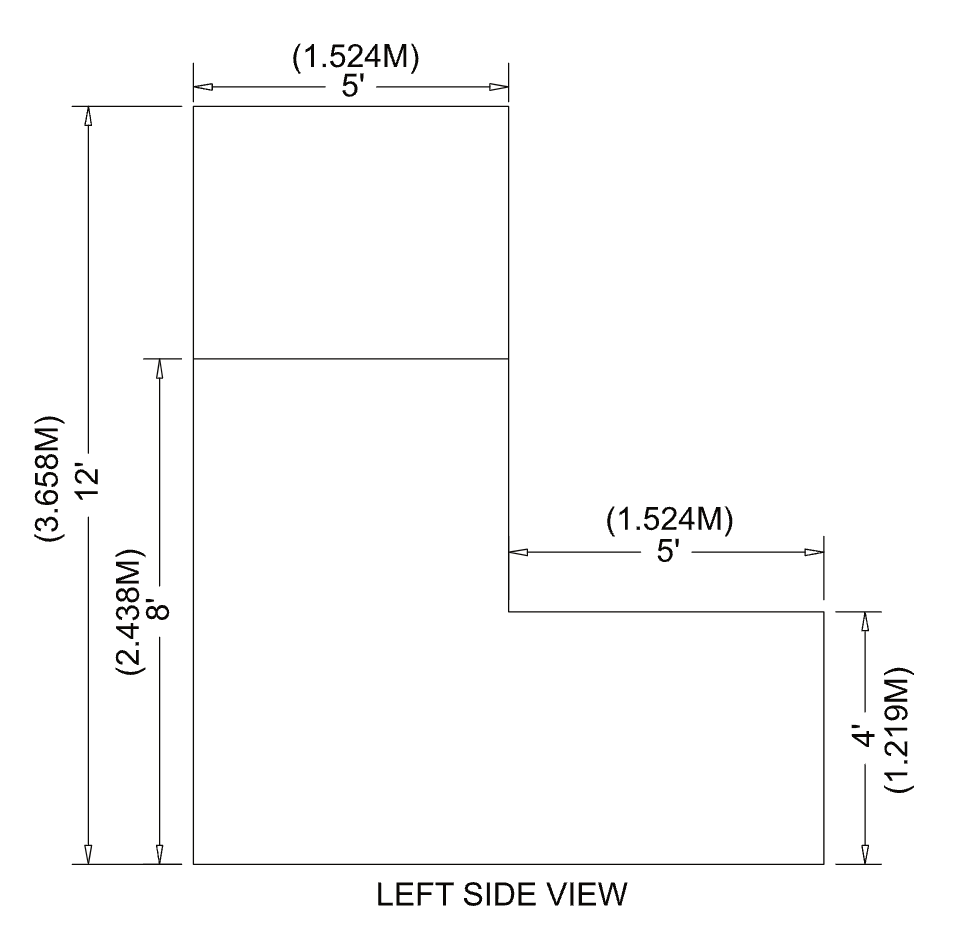
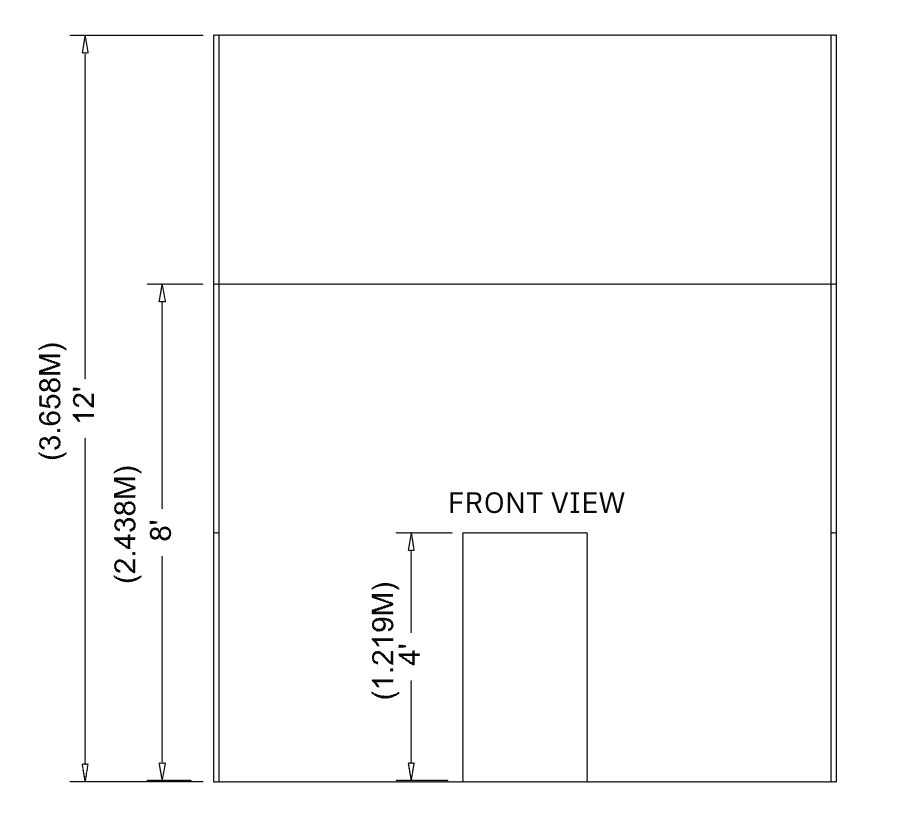
Island Booth
An Island Booth is exposed to aisles on all four sides.
Dimensions & Use of Space
An Island Booth is 20' x 20' (6.10m x 6.10m) or larger.
The entire cubic content of the space may be used to the maximum allowable height, which is 16' (4.88m), including signage. Hanging signs are permitted in Island Booths.

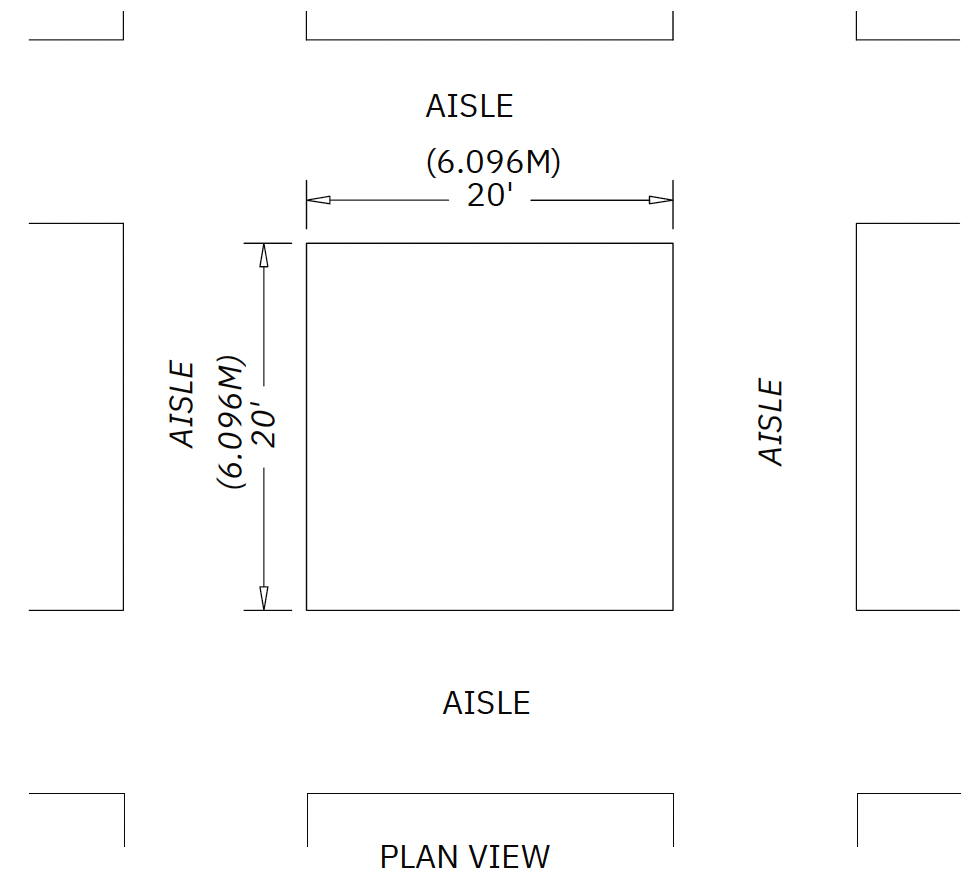

Canopies & Ceilings
Canopies, including ceilings, umbrellas and canopy frames, can be either decorative or functional (such as to shade computer monitors from ambient light or for hanging products). Canopies for Linear or Perimeter Booths should comply with the Line of Sight requirements. (See “Use of Space” for Linear or Perimeter Booths). The bottom of the Canopy should not be lower than 7' (2.13m) from the floor within 5' (1.52m) of any aisle. Canopy supports should be no wider than 3” (.08m). This applies to any booth configuration that has a sightline restriction, such as a Linear Booth. Fire and safety regulations in many facilities strictly govern the use of canopies, ceilings, aisle, and other similar coverings.
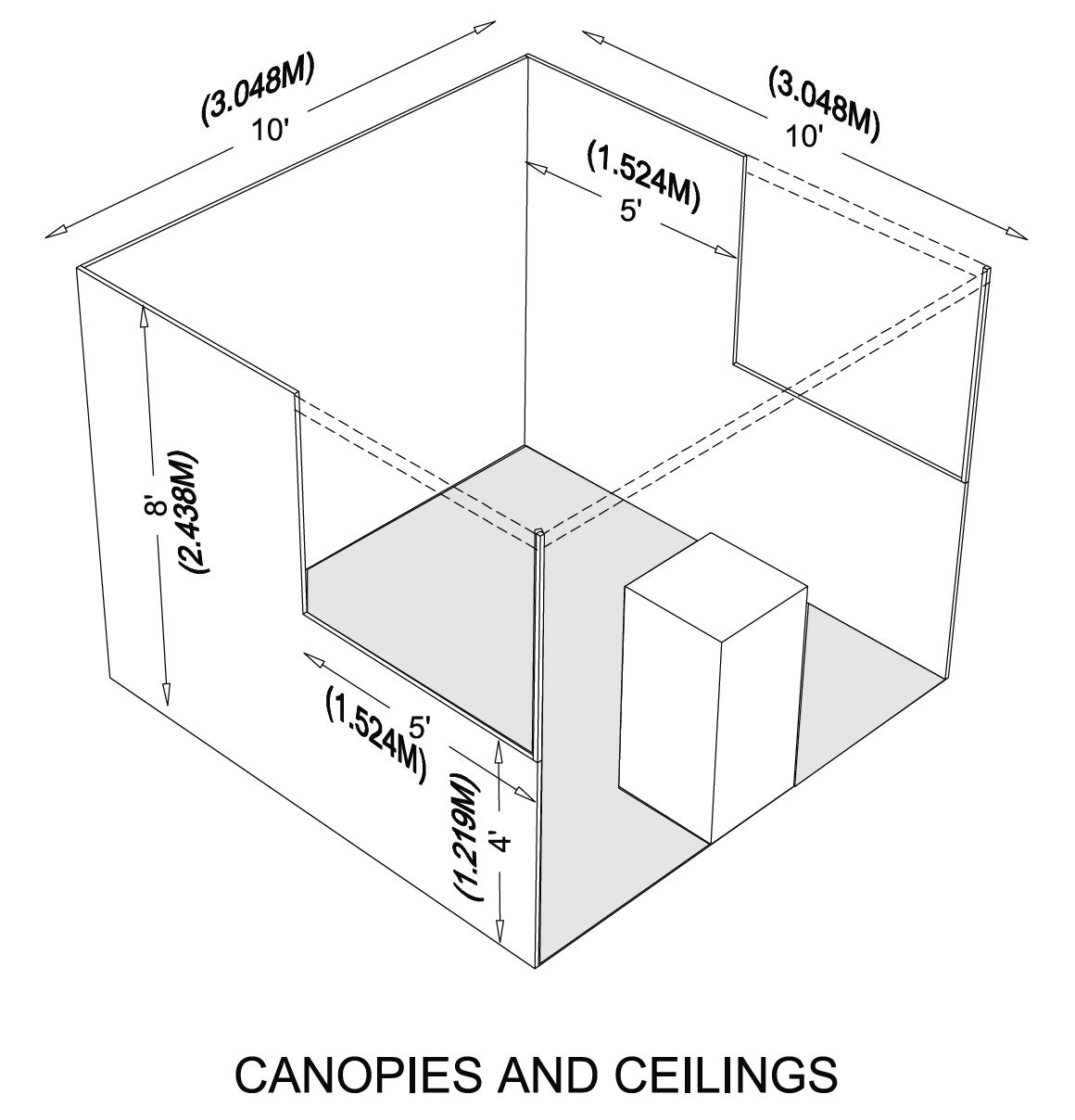

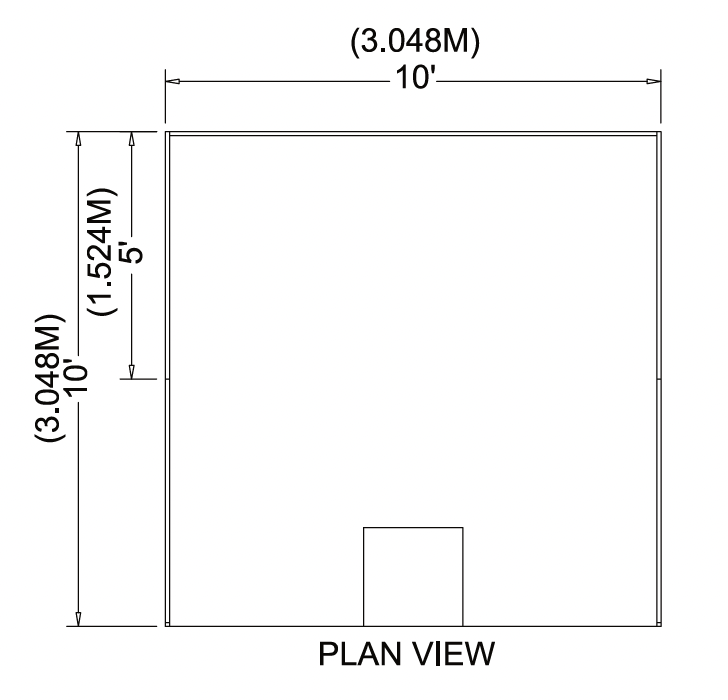
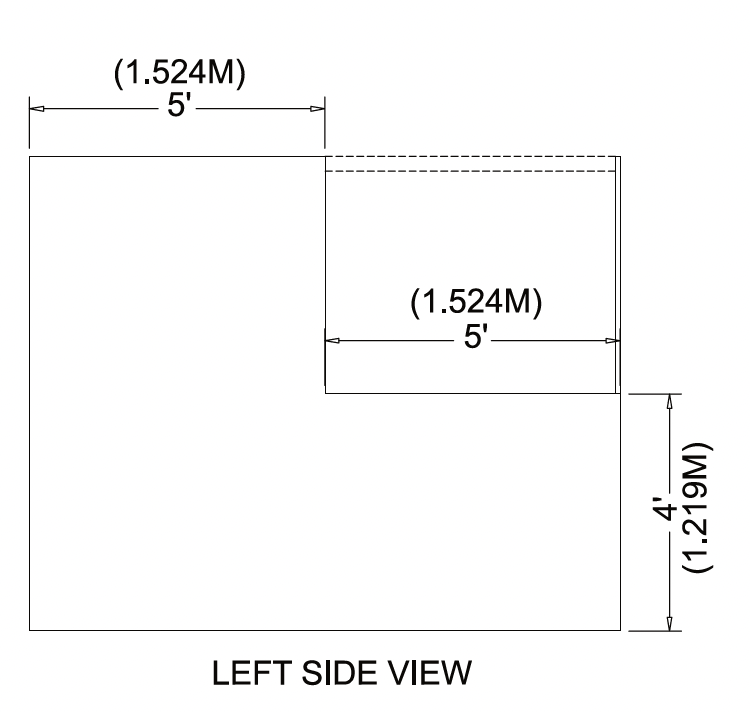
Hanging Signs & Graphics
Hanging Signs and Graphics are permitted in all standard Island Booths only, to a maximum height of 24' (7.32m). The distance is measured from the floor to the top of the sign. Whether suspended from above, or supported from below, they should comply with all ordinary use-of-space requirements.
Hanging Signs and Graphics should be set back 10' (3.05m) from adjacent booths and be directly over contracted space only.
Requests for the use of hanging signs must be emailed to exhibitors@americanpetproducts.org at least 60 days prior to installation. Graphics and Drawings will be submitted to the Convention Center for inspection and final approval.
Towers
A Tower is a free-standing exhibit component separate from the main exhibit fixture. The height restriction is the same as that which applies to the appropriate exhibit configuration being used.
Towers in excess of 8' (2.44m) should have drawings available for inspection. Fire and Safety regulations in many facilities strictly govern the use of Towers. A building permit or safety lines may be required.
Multi-Story Exhibit
A Multi-story Exhibit is a booth where the display fixture includes two or more levels. In many cities, a Multi-story Exhibit requires prior approval by the exhibit facility, and/or relevant local government agency, as well as show management because it is deemed a “structure” for building purposes.
The city building department generally needs to issue a building permit based on an application and drawings prepared and submitted by a licensed architect or engineer. Exhibitors should obtain local building regulations early on to ensure that all time constraints are met.
Americans With Disabilities Act (ADA)
All exhibiting companies are required to be in compliance with the Americans with Disabilities
Act (ADA), and are encouraged to be sensitive, and as reasonably accommodating as possible, to attendees with disabilities. Information regarding ADA compliance is available from the U.S. Department of Justice ADA Information Line (800-514-0301), and from the ADA website at www.ada.gov. Some examples of how to design an exhibit for ADA compliance:
- Make exhibits wheelchair accessible by ramping raised exhibit flooring without extending a ramp into the aisle. Note: a standard wheelchair ramp should have a grade no steeper than 1:12. This means that for every inch of rise (change in height), there should be 12 inches of run (change in length).
- Ramp the entry or use hydraulic lifts to trailer exhibits.
- Avoid-double padded plush carpet to ease mobility device navigation.
- Provide the same attendee experience on both levels of a two-story exhibit.
- Offer an interpreter or assistive listening devices (ALS) for audio presentations or have a transcript of the presentation available.
- Use Assistive Technology or Speech Synthesizers for attendees who are blind or visually impaired.
- Arrange touchscreen displays at a height that is wheelchair accessible.
To avoid heavy fines by the U.S. Department of Justice, exhibitors must adhere to the ADA rules. Exhibits are not exempt from ADA compliance.
